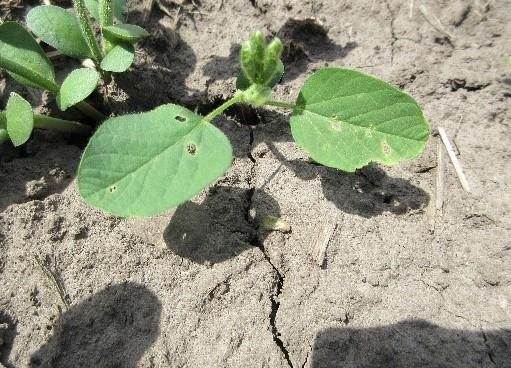By Bryan Jensen
Many things that can lower corn and soybean plant stands. Insects are only one. However, they are one factor that should be considered for those “less-than-optimal” stands. For this article, I will focus on only those insects that reduce emergence. Not those which kill a plant after emergence. Wireworms and seedcorn maggot are two possibilities.
Wireworms impact corn stands, rarely soybeans. Insecticide seed treatments can help reduce injury but will not eliminate it. If wireworms are (part of) the problem, you should see a range of symptoms not just loss of stand. Larvae also feed on the below ground shoot and that feeding site can be either at or above the growing point. If feeding is at the growing point, above ground symptoms are often call “wilted-whorl” or “dead-heart”. If feeding is above the growing point, you will notice holes in leaves. If you are scouting early in the growing season, you can often find the larvae before they migrate lower in the soil profile. We have several species of wireworm, and each have an extended lifecycle (2-5 years) as immatures. Therefore, field histories can be a useful tool to diagnose injury. Often injury is associated with grassy weed escapes and/or found in corn after alfalfa or grass sod. Wireworm damage is often clumped within a field because of the weeds and/or their preference for a specific soil type. There are no rescue treatments for wireworms.
Seedcorn maggots will damage, however soybeans are more susceptible to injury. Adults have a discrete first-generation flight period. Therefore, you are likely to find injury to stands planted during a narrow window of time (days to a week). Adults like to lay eggs in newly tilled soil and fields with green or livestock manure. Field symptoms for both corn and soybean include poor emergence. In corn, you should also find some emerged plants with holes in the cotyledon. Soybean will also have a range of symptoms that include “snakeheads” (severed and/or crooked hypocotyl without cotyledons) and scarred or completely consumed cotyledons that may or may not have a viable growing point. Some soybean plants will also likely have a few holes in the unifoliate leaves.
Happy scouting!

Source : wisc.edu